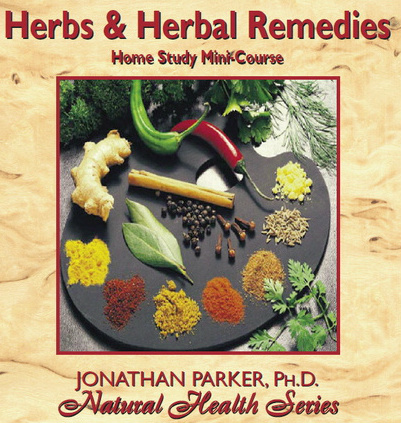Mint’s Healing and Protective Traditions

Hey there, amazing readers! 🖐️ Just a quick note: yes, we know there are a lot of ads here. Trust us, we get it—it’s not the prettiest look, but they help us keep this blog alive and kicking. Those pesky little ads cover the costs of all the behind-the-scenes magic, from hosting and tech stuff to creating content we hope you’ll love.
We’re committed to delivering quality posts, and your support (even just sticking around despite the ads) means everything to us. So, bear with us, and thanks for helping us keep the good vibes rolling. Now, on to the fun stuff! 😉
TRANSLATE BUTTON AT THE END OF THE ARTICLE
A Quick Overview
Mint, with its refreshing aroma and cooling taste, is not just a culinary herb but has been treasured for centuries for its healing and protective properties.
The origins of mint’s therapeutic benefits can be traced back to ancient times when it was used in traditional medicine to treat various ailments.
From digestive health to skincare, mint has been a versatile herb known for its antimicrobial, antiviral, anti-inflammatory, and soothing effects.
In this article, we will delve into the rich traditions of mint and explore its numerous health benefits across different aspects of well-being.
The Origins of Mint’s Healing Properties
Mint, scientifically known as Mentha, has a long history dating back to ancient civilizations such as the Greeks, Romans, and Egyptians.
The Greek philosopher Aristotle mentioned mint’s use as an aphrodisiac, while Roman naturalist Pliny the Elder documented its medicinal properties.
In ancient Egypt, mint was used for its soothing effects and was even found in the tomb of Pharaoh Tutankhamun.
The herb’s healing properties were well-recognized in these ancient cultures, laying the foundation for its continued use in traditional medicine.
Mint’s Role in Traditional Medicine
Mint has played a prominent role in traditional medicine across various cultures worldwide.
In Ayurveda, the traditional medicine system of India, mint is considered a cooling herb that helps balance the body’s doshas.
Chinese traditional medicine also uses mint to alleviate digestive issues and clear heat from the body.
Native American tribes used mint for its soothing properties, while European folk medicine utilized it to aid in digestion and relieve headaches.
These diverse traditions highlight mint’s versatility in addressing a wide range of health concerns.
Benefits of Mint for Digestive Health
One of the most well-known benefits of mint is its ability to support digestive health.
Mint is often recommended for alleviating symptoms of indigestion, bloating, and gas.
The herb’s natural compounds can help relax the muscles in the digestive tract, promoting better digestion and reducing discomfort.
Mint is also believed to have carminative properties, which can help prevent the formation of gas in the intestines.
Whether consumed fresh, as a tea, or in oil form, mint is a go-to remedy for digestive issues.
Mint’s Antimicrobial and Antiviral Effects
Mint possesses potent antimicrobial and antiviral properties that make it a valuable ally in fighting infections.
The high concentration of menthol in mint leaves has been shown to exhibit strong antibacterial effects against a variety of pathogens.
Additionally, mint’s antiviral properties can help combat viruses, making it a popular choice during cold and flu season.
Whether used topically or ingested, mint can help boost the immune system and protect the body from harmful microbes.
Mint in Skincare: Soothing and Healing
In addition to its internal benefits, mint is also prized for its skincare properties.
The herb’s cooling sensation and anti-inflammatory compounds make it an excellent natural remedy for soothing skin irritations, such as sunburns, rashes, and insect bites.
Mint is often used in skincare products like creams, lotions, and masks to calm the skin and reduce redness.
Its astringent properties can also help tighten pores and control excess oil production, making it a popular choice for those with oily or acne-prone skin.
Mint’s Use in Aromatherapy and Relaxation
The invigorating scent of mint has made it a staple in aromatherapy for promoting relaxation and mental clarity.
The aroma of mint essential oil is known to uplift the mood, reduce stress, and improve focus.
Inhaling mint vapors can also help alleviate symptoms of nausea and headaches.
Whether diffused in a room, added to a bath, or applied topically, mint essential oil can create a calming atmosphere that promotes overall well-being.
Mint as a Natural Insect Repellent
Mint’s strong scent acts as a natural insect repellent, making it an effective way to keep pesky bugs at bay.
Planting mint in your garden or rubbing crushed mint leaves on your skin can help repel mosquitoes, ants, and other insects.
Mint essential oil can also be mixed with water and sprayed around the house to deter insects from entering.
Not only does mint provide protection from bites and stings, but it does so without the use of harsh chemicals found in commercial repellents.
How Mint Can Help Relieve Headaches
For centuries, mint has been used as a natural remedy for headaches and migraines due to its analgesic and calming properties.
The cooling sensation of mint can help alleviate tension headaches by relaxing muscles and improving blood flow.
Applying diluted mint oil to the temples or inhaling mint vapors can provide quick relief from headache symptoms.
Mint’s ability to reduce inflammation and soothe nerves makes it a gentle yet effective option for those seeking relief from occasional headaches.
Mint’s Potential Anti-inflammatory Properties
Mint contains rosmarinic acid, an antioxidant with anti-inflammatory properties that can help reduce inflammation in the body.
Chronic inflammation is linked to various health conditions, including arthritis, heart disease, and autoimmune disorders.
Adding mint to your diet or using it in oil form may help combat inflammation and support overall health.
By reducing inflammation, mint can help alleviate pain, improve joint mobility, and promote better cardiovascular function.
Mint for Respiratory Health and Congestion
The menthol in mint leaves acts as a natural decongestant, making it a popular choice for respiratory health and congestion relief.
Inhaling steam infused with mint leaves or essential oil can help clear nasal passages, reduce coughing, and ease breathing difficulties.
Mint tea is often recommended for soothing sore throats and reducing phlegm production.
Whether battling a cold, allergies, or sinus congestion, mint’s respiratory benefits can provide much-needed relief.
Using Mint for Oral Hygiene and Fresh Breath
Mint’s antimicrobial properties extend to oral health, making it a valuable ingredient in dental care products.
The antibacterial effects of mint can help kill germs that cause bad breath and plaque buildup.
Chewing on fresh mint leaves or using mint-infused mouthwash can freshen breath and promote healthier gums.
Mint’s cooling sensation can also help alleviate toothaches and gum inflammation.
Including mint in your oral hygiene routine can contribute to overall dental wellness and a confident smile.
Precautions and Side Effects of Using Mint
While mint is generally safe for most people when consumed in moderate amounts, there are some precautions to consider.
Excessive intake of mint may cause heartburn or acid reflux in some individuals due to its relaxing effects on the esophageal sphincter.
Mint essential oil should be diluted before applying to the skin to avoid irritation or allergic reactions.
Pregnant women and individuals with certain health conditions should consult a healthcare provider before using mint supplements or products.
Overall, using mint responsibly and in appropriate doses can help maximize its health benefits while minimizing potential side effects.
Conclusion
In conclusion, mint’s healing and protective traditions have stood the test of time, spanning across cultures and centuries.
From its origins in ancient civilizations to its modern-day applications in medicine and wellness, mint remains a versatile herb cherished for its numerous health benefits.
Whether soothing digestive issues, promoting skincare, relieving headaches, or supporting respiratory health, mint continues to prove its effectiveness in enhancing overall well-being.
By understanding the rich history and diverse uses of mint, we can fully appreciate its therapeutic value and incorporate it into our daily health routines.

The Enlightenment Journey is a remarkable collection of writings authored by a distinguished group of experts in the fields of spirituality, new age, and esoteric knowledge.
This anthology features a diverse assembly of well-experienced authors who bring their profound insights and credible perspectives to the forefront.
Each contributor possesses a wealth of knowledge and wisdom, making them authorities in their respective domains.
Together, they offer readers a transformative journey into the realms of spiritual growth, self-discovery, and esoteric enlightenment.
The Enlightenment Journey is a testament to the collective expertise of these luminaries, providing readers with a rich tapestry of ideas and information to illuminate their spiritual path.
Our Diverse Expertise 🌟
While our primary focus is on spirituality and esotericism, we are equally passionate about exploring a wide range of other topics and niches 🌍📚. Our experienced team is dedicated to delivering high-quality, informative content across various subjects ✨.
To ensure we provide the most accurate and valuable insights, we collaborate with trusted experts in their respective domains 🧑🏫👩🏫. This allows us to offer well-rounded perspectives and knowledge to our readers.
Our blog originally focused on spirituality and metaphysics, but we’ve since expanded to cover a wide range of niches. Don’t worry—we continue to publish a lot of articles on spirituality! Frequently visit our blog to explore our diverse content and stay tuned for more insightful reads.






